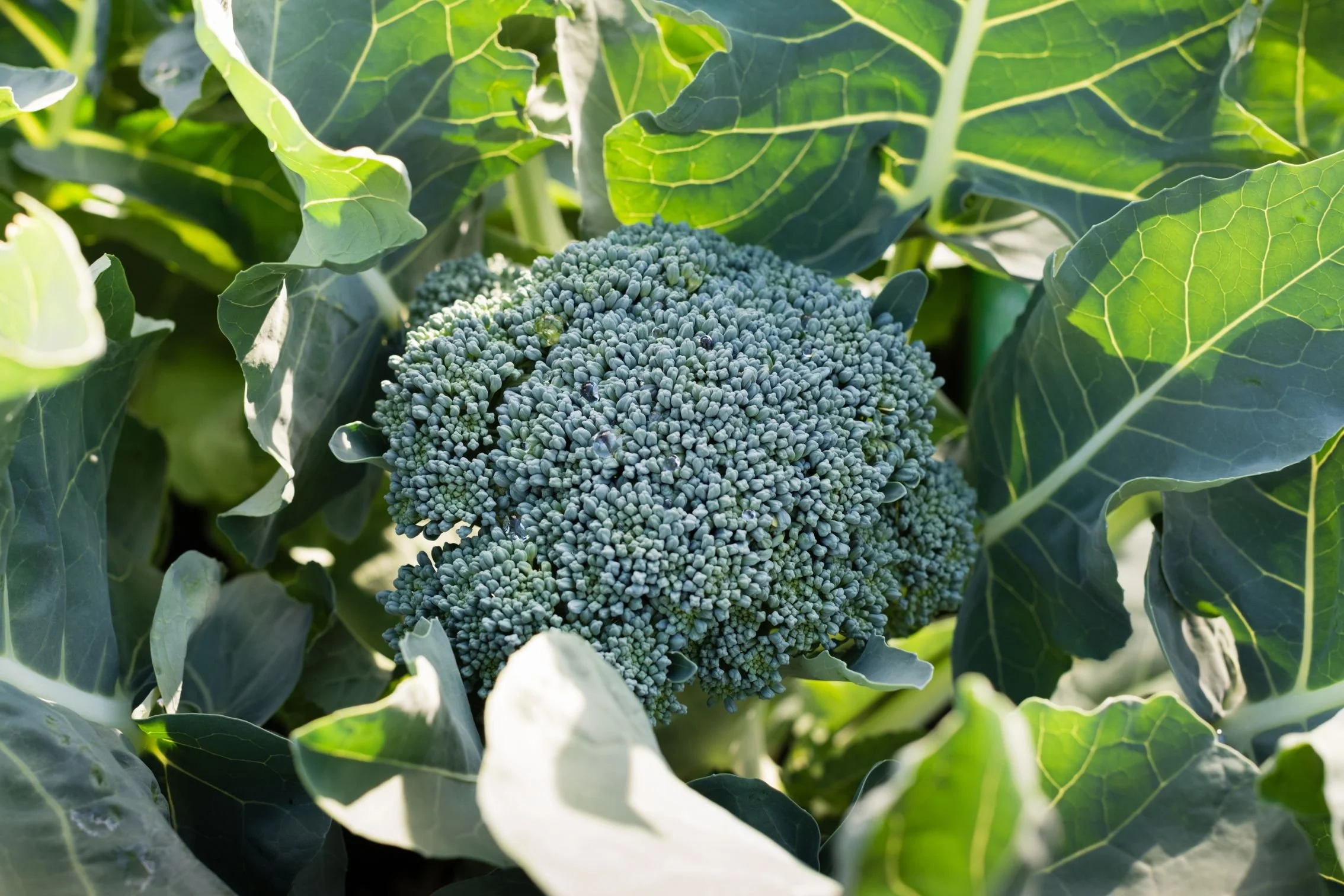
April Gardening Guide
April is a wonderful time to get your hands dirty in the garden.
As the weather starts to cool and the days become shorter, it's the perfect time to focus on both planting and harvesting a variety of vegetables.
Here’s a fun guide to help you make the most of your gardening efforts this April.

Vegetables
What Vegetables to Plant in April
April is a transitional month in the garden as summer crops wind down and cool-season vegetables take centre stage. Here are some vegetables you can start planting:
Broccoli: A hardy vegetable that thrives in cooler temperatures. Plant seedlings for a head start.
Cauliflower: Similar to broccoli, cauliflower enjoys the cool weather and can be planted from seedlings.
Carrots: Sow seeds directly into the soil. Ensure the soil is loose to allow the roots to grow deep.
Spinach: This leafy green grows quickly and can tolerate the cooler temperatures of autumn.
Garlic: Plant individual cloves with the pointed end facing upwards for a harvest in the spring or summer.
Lettuce: Perfect for salads, lettuce can be planted throughout April for fresh, crunchy leaves.
What Vegetables Are Ready to Harvest
April is also a time to reap the benefits of your earlier planting efforts. Here are some vegetables that may be ready for harvest:
Pumpkins: Check your pumpkins for a deep, even colour and a hard skin, which indicates readiness.
Sweet Corn: Test the kernels; they should be full and milky when pierced.
Beans: Pick them regularly to encourage more growth and ensure they are tender.
Zucchini: Harvest when they are about 15-20cm long for the best flavour and texture.
Eggplants: Look for glossy skins and firm flesh as signs they’re ready to be picked.
Great Tips for Gardening in April
Soil Preparation: Before planting, enrich your soil with DCT Lazerhume or compost or to provide nutrients for your new crops.
Mulching: Use mulch to retain moisture and suppress weeds, which can be particularly pesky as the weather cools.
Frost Protection: Be on the lookout for early frosts. Use frost cloths or protective covers for susceptible plants.
Pest Control: Keep an eye out for slugs and snails, which can be more prevalent in cooler weather. Use traps or natural deterrents to protect your plants.
Watering: Although it’s cooler, consistent watering is essential, especially for seedlings. Water early in the day to prevent fungal diseases.
Every purchase from our website goes into our monthly prize draw.

Flowers
April is an exciting time for flower enthusiasts.
As the warm summer days give way to cooler autumnal weather, it provides the perfect opportunity to plant a variety of beautiful blooms that can add colour to your garden.
Here’s a guide to help you make the most of your flowering garden efforts this month.
What Flowers to Plant in April
April is a great time to focus on planting flowers that thrive in cooler temperatures. Here are some flowers you can start planting:
Pansies
These vibrant flowers are perfect for adding color to your garden during the cooler months. Plant seedlings for a quicker bloom.
Violas
Similar to pansies, violas are hardy and come in a variety of colors. They’re perfect for garden beds and containers.
Sweet Peas
Known for their delightful fragrance, sweet peas can be sown directly into the soil. They prefer a sunny spot and well-drained soil.
Calendulas
These hardy annuals are easy to grow and provide bright, cheerful blooms that can last well into winter.
Primulas
Primulas thrive in cooler climates and are perfect for shady spots in your garden. Plant them in well-drained soil for best results.
Great Tips for Gardening with Flowers in April
Soil Preparation
Enrich the soil with organic matter like compost to provide essential nutrients for your flowers applying DCT Lazerhume on top of the compost can help make it more effective, Lazerhume also adds more minerals in balance and can protect the plants from any nasties hiding in the compost
Mulching
Apply a layer of mulch around your flower beds to help retain moisture and keep the roots warm as temperatures drop.
Frost Protection
Some flowers may be susceptible to frost. Use protective covers or bring potted flowers indoors if frost is predicted.
Deadheading
Regularly remove spent blooms to encourage new growth and extend the flowering period of your plants.
Pest Management
Watch out for aphids and caterpillars, which can damage your flowers. Encourage natural predators like ladybugs or use insecticidal soap to manage infestations.
By focusing on these planting and care tips, you can enjoy a vibrant and colourful garden throughout the autumn months in New Zealand. Happy gardening!
Did you know we also have a Natural Animal Health product called “Animal Boost.

Lawn
April is an ideal month to focus on lawn care in New Zealand, as the cooler temperatures create favourable conditions for maintaining and improving your lawn. With the right approach, you can keep your lawn healthy and vibrant throughout the autumn season. Here’s a comprehensive guide to help you achieve a lush, green lawn in April.
Tips and Tricks for a Good Lawn
Watering
Although rainfall may increase in April, monitor your lawn’s moisture levels. Water deeply but less frequently, ensuring the water penetrates the soil to encourage deep root growth. Watering early in the morning is best to reduce evaporation and the risk of fungal diseases.
Raking
Regularly rake your lawn to remove fallen leaves and debris. This will prevent the build up of thatch, which can inhibit grass growth and encourage pests.
Edge Trimming
Keep lawn edges neat and tidy by using a trimmer or edging tool. This not only improves the appearance of your lawn but also helps prevent grass from encroaching on garden beds or paths.
Pest Management
Keep an eye out for signs of lawn pests such as grubs or caterpillars. If necessary, apply biological controls or consult with a lawn care professional for treatment options,
“DCT products work naturally in the soil and have been shown to reduce grass grubs”
Soil Testing
Consider testing your soil's pH and nutrient levels to better understand its needs. Adjustments such as lime application may be required to optimize growing conditions. If your a regular user of DCT Lazerhume, Lazerhume naturally alters the soil pH to the requirements of the natural biome (worms & soil biology)
By incorporating these lawn care practices and tips, you can ensure your lawn remains healthy and attractive throughout April and beyond. With proper maintenance, your lawn will be well-prepared to endure the winter months and thrive in the coming spring. Happy lawn caring!
Key Lawn Care Tasks for April
Mowing
As the growth rate of grass slows down, adjust your mowing schedule accordingly. Keep the grass at a slightly higher length (around 4-5 cm) to protect it from cooler temperatures.
Aeration
Aerate your lawn to improve soil drainage and encourage root growth. This is particularly important if your lawn has become compacted over the summer months. Applying DCT Lazerhume or DCT Lawn naturally works in the soil to free it up from a compacted state allowing more aeration and to allow water to penetrate more easily reducing a muddy lawn over winter, for bad cases we recommend using DCT Lazerhume at a higher dose.
Fertilising
Applying DCT Lawn a balanced fertiliser and soil conditioner to provide essential nutrients that will support root development and overall lawn health as the weather cools.
Weed Control
Use selective herbicides to tackle persistent weeds, but be cautious of over-application. Removing weeds manually can also be effective and environmentally friendly. We have a product called DCT Weed Spray Enhance, Weed Spray Enhance is a natural product that binds with the chemical herbicide and allows it to be more effective at killing the weed but also helps to break down the chemical in the soil making it safer for the environment.
Overseeding
If your lawn has bare patches or thinning areas, overseed with a suitable grass seed mixture. This will help thicken the lawn and improve its resilience.
🎉 Sign up for our mailing list before the clock strikes midnight on the last day of April 2025, and you could win some free product in our newsletter draw! If you're already a subscriber, you’re automatically entered in the draw. 🎉
Good Luck we hope you win!
April in New Zealand is a wonderful time to harvest a variety of fruits and vegetables from your garden. This dessert recipe combines the natural sweetness of fruits with the subtle flavors of vegetables for a delightful crisp that’s perfect for an autumn evening.
Garden Harvest Dessert: Fruit & Vegetable Crisp
Ingredients
Fruit and Vegetable Filling:
2 cups of apples, peeled, cored, and sliced (apples are typically available in April)
1 cup of pears, peeled, cored, and sliced
1 cup of feijoas, peeled and sliced (a unique fruit often found in NZ gardens)
1 cup of carrots, grated
1 tablespoon of lemon juice
1 teaspoon of ground cinnamon
1/2 teaspoon of ground nutmeg
1/4 cup of honey or maple syrup for natural sweetness
Crisp Topping:
1 cup of rolled oats
1/2 cup of whole wheat flour
1/2 cup of brown sugar
1/2 teaspoon of salt
1/2 cup of butter, melted (or coconut oil for a dairy-free option)
1/2 cup of chopped nuts (such as walnuts or almonds)
Instructions
Preheat your oven to 180°C (350°F).
Prepare the fruit and vegetable filling: In a large bowl, combine the sliced apples, pears, feijoas, and grated carrots. Drizzle with lemon juice and sprinkle with cinnamon and nutmeg. Add the honey or maple syrup and toss everything together until well mixed.
Transfer the filling to a greased baking dish, spreading it out evenly.
Make the crisp topping: In a separate bowl, combine the rolled oats, whole wheat flour, brown sugar, and salt. Stir in the melted butter or coconut oil until the mixture is crumbly. Add the chopped nuts and mix until evenly distributed.
Sprinkle the crisp topping evenly over the fruit and vegetable mixture in the baking dish.
Bake in the preheated oven for 35-40 minutes, or until the topping is golden brown and the fruit is bubbly and tender.
Cool slightly before serving. Enjoy your delicious fruit and vegetable crisp on its own, or pair it with a scoop of vanilla ice cream or a dollop of whipped cream for extra indulgence.
Tips
Customise your crisp by using other available garden ingredients such as rhubarb or parsnips for a unique twist.
For added nutrition, consider adding a handful of spinach or kale to the fruit mixture. The flavours blend surprisingly well with the sweetness of the fruit.
Store leftovers in an airtight container in the refrigerator for up to 3 days. Reheat in the oven for best results.
Gluten Free Tip, From our Gluten free Guru.
Try substituting Rolled oats for Gluten free wheat bix and Almond flour instead of the Whole Wheat flour.
Dairy Free try replacing the Butter for dairy free spread
This dessert not only highlights the abundance of a New Zealand garden in April but also offers a healthy and comforting treat that celebrates the season’s best produce. Enjoy your garden-fresh creation!










